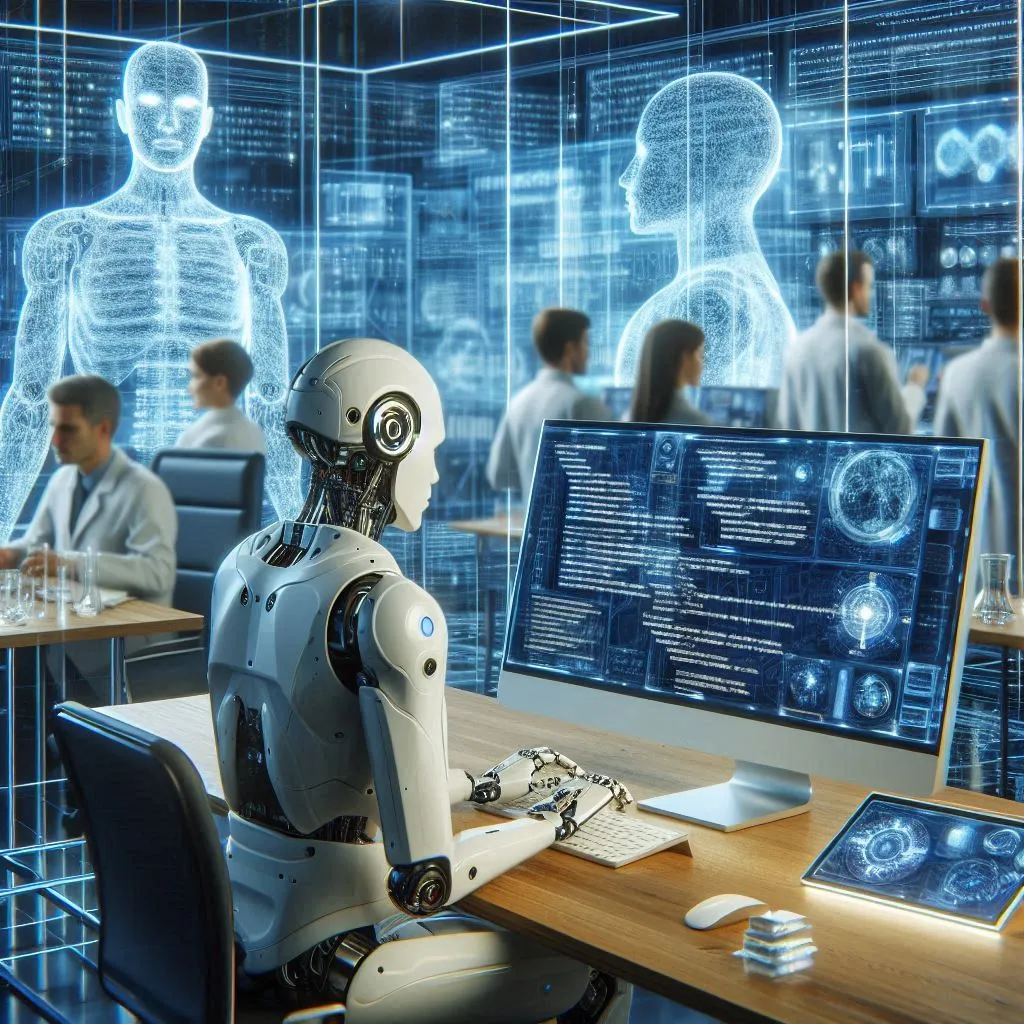Artificial intelligence is a field within computer science, whose objective is focused on the creation of computational systems capable of performing tasks that normally require human intelligence. Throughout this article we will explore the artificial intelligence basics, as well as briefly review the origin and evolution of this interesting and currently very useful branch of computer science. In addition, we will try to demystify AI and provide a clear understanding of this fascinating technology.
What is Artificial Intelligence?
Artificial intelligence is the ability of a machine to mimic human cognitive functions such as learning, reasoning and problem solving. In essence, AI seeks to create systems that can think and act like humans. This includes tasks such as speech recognition, computer vision, natural language processing and decision making.

Origin and Evolution of Artificial Intelligence
The Early Days
The concept of intelligent machines is not new. As early as the 1950s, scientists such as Alan Turing, known for his work in code breaking during World War II, began to explore the possibility of creating machines that could “think.” In 1950, Turing proposed the famous “Turing Test,” a criterion for determining whether a machine can exhibit intelligent behavior indistinguishable from that of a human being. However, it has not been until the last decade that this area has had a significant breakthrough, due to advances in three major factors: cloud computing, the large amount of data and the great advances in machine learning.

The Golden Age of AI
AI as a formal field of study as we now know it began in 1956 during the Dartmouth Conference, organized by John McCarthy, Marvin Minsky, Nathaniel Rochester and Claude Shannon. This event marked the beginning of AI research and led to the development of the first artificial intelligence programs. During the 1960s and 1970s, AI experienced rapid growth, with advances in areas such as natural language processing and game theory.
AI Winter
Despite initial advances, AI faced numerous challenges. Expectations were high, but the technology and hardware of the time did not match the ambitions of researchers. This led to periods of disillusionment and funding cutbacks, known as the “AI winters,” which occurred in the 1970s and 1980s.
Resurgence and Modern Era
AI experienced a renaissance starting in the 1990s, driven by increased computational power, the availability of vast amounts of data (Big Data), and advances in machine learning algorithms (machine learning). Today, AI is an integral part of many everyday technologies and applications, from virtual assistants such as Siri and Alexa to Netflix and Amazon’s recommendation systems.

Types of Artificial Intelligence

One of the first artificial intelligence basics are the types of artificial intelligence. Artificial intelligence can be classified into different types according to their capability and application. Below, we describe the main types of AI:
1. Weak or Specific AI (Narrow AI)
Narrow AI is designed to perform a specific and limited task. It has no capability to perform tasks outside its field of application. For example:
- Virtual assistants: Siri, Alexa and Google Assistant.
- Recommendation systems: The algorithms that suggest products on Amazon or movies on Netflix.
- Chatbots: Programs that can hold simple conversations with users.
2. Strong or General AI (Artificial General Intelligence, AGI)
Strong AI, also known as artificial general intelligence, is a more advanced form of AI that can perform any intellectual task that a human being can do. AGI has the ability to learn, reason, and apply knowledge in a general way. Although it is a long-term goal in the field of AI, no fully developed AGI system currently exists.
3. Artificial Superintelligence (Superintelligence)
Artificial superintelligence is a hypothetical concept in which machine intelligence surpasses human intelligence in all aspects, including creativity, problem solving and decision making. Although an intriguing idea, superintelligence is still the subject of debate and speculation in the scientific community.
Applications of Artificial Intelligence

AI has a wide range of applications in various fields, demonstrating its impact and potential. For example:
- Medicine: AI-assisted diagnosis, drug development and personalized treatments.
- Finance: Risk analysis, fraud detection and automated financial advice.
- Transportation: Autonomous vehicles and transportation route optimization.
- Education: Intelligent tutoring systems and personalization of learning.
- Entertainment: Content creation, augmented reality and video games.
What is machine learning?
It allows computers to learn based on data sets and learn over time through numerous iterations on the same data without the need to be explicitly programmed.
In addition, machine learning models are trained using one of two techniques: supervised or unsupervised learning. In supervised, the computer or machine is presented with a training set consisting of a large volume of labeled data sets.
With unsupervised machine learning, the algorithm is trained to learn to identify patterns from unstructured data sets.
Ethical considerations
With the increasing development of artificial intelligence in recent years, it is very important to address some considerations. Issues such as data privacy, algorithmic layeredness of machine learning models and job replacement in some industries, accountability and fairness in the design, implementation and impact of AI systems.
Conclusion
In conclusion, Understanding the artificial intelligence basics is essential to appreciating its impact on our daily lives and its future potential. From its humble beginnings to its central role in modern technology, AI has come a long way. By learning about its origin, evolution and the different types of artificial intelligence, we can get a clearer picture of how this technology is transforming the world. With applications ranging from medicine to entertainment, AI remains an innovative and ever-evolving force.

